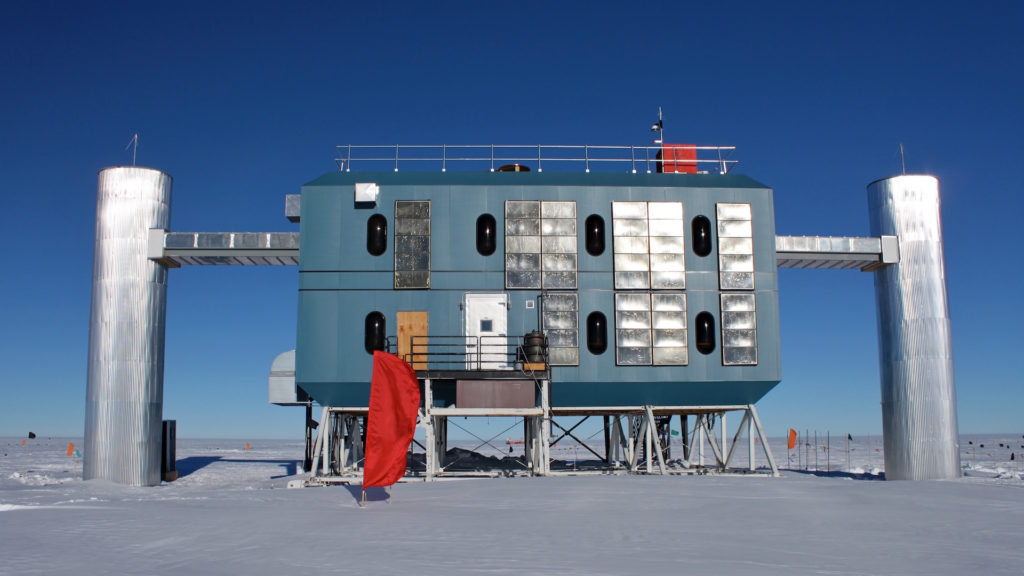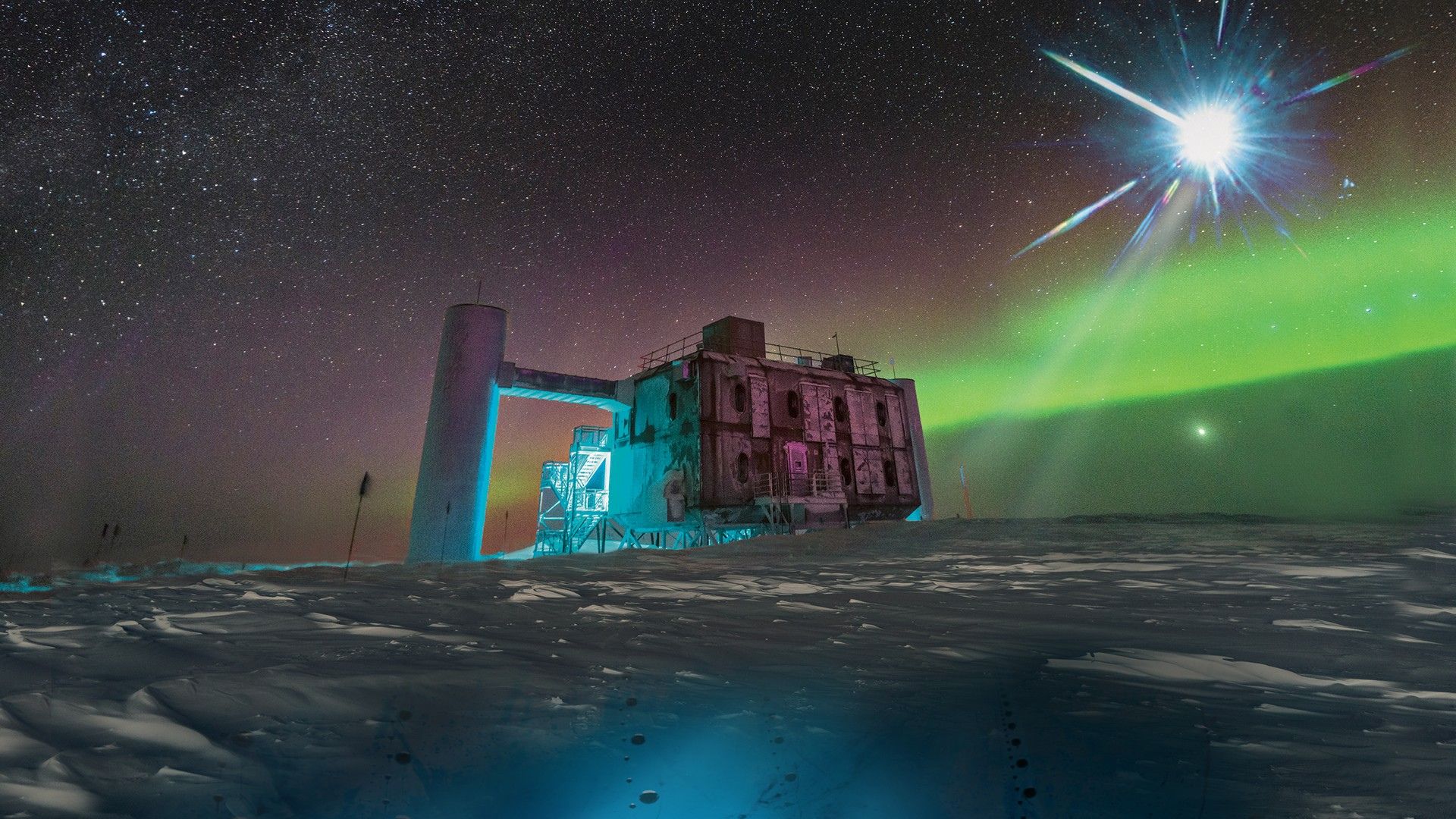Neutrinos have been detected all over the Universe, but never from our Milky Way. It is now done thanks to a detector installed in Antarctica, assisted by an artificial intelligence which was able to observe these enigmatic and elusive particles.
If you are afraid of waves, chemicals or any other invisible substance that surrounds us, hold on tight: you are also constantly surrounded, and even crossed right through by mysterious particles called neutrinos. These elementary particles which travel at a speed close to that of light are billions to cross each square centimeter of our body every second and are found everywhere in the Universe.
However, their nickname of ghost particles is not usurped, because they remain particularly discreet, almost never interact with ordinary matter, which makes them very difficult to detect.
Nevertheless, detectors on Earth today manage to capture tens of thousands of high-energy neutrinos each year, all from distant cosmic events taking place light years from our galaxy. They are different from the solar neutrinos coming from our Sun and which constitute the immense majority of the particles which we receive. High-energy neutrinos are therefore more difficult to spot. Achieving this is a real feat, but what about similar neutrinos produced in our galaxy? They must exist too? ” There aresays to Numerama Francis Halzen, physicist from the University of Wisconsin, and member of the IceCube collaboration. They are few in number and very difficult to detect, but we have found some. »
The researcher published a study published in the journal Science on June 29, 2023, in which he returns to the discovery of cosmic rays charged with neutrinos which come from our own galaxy.
“House” neutrinos embedded in the mass
Before going into details, an explanation is in order: cosmic rays charged with neutrinos regularly arrive on Earth. But, as they are deflected by the interstellar magnetic fields they cross, they come to us from all directions. It is difficult to trace the source.
In 2022, a team of astrophysicists was able to identify blazars, galaxy nuclei that emit powerful radiation, and which would send neutrinos. But, paradoxically, while the technique is perfecting, it remains impossible to find these same particles directly emitted by our own galaxy. ” When we found the first neutrinos, we thought they came from ussays Francis Halzen. When we look at the sky, most of the visible stars do come from the Milky Way, but for neutrinos, it’s the other way around. »
The problem is not so much that these neutrinos are difficult to detect. They are not more so than those of extragalactic origin, but they are much less numerous and find themselves drowned in the mass.
To manage to sort, the researchers used the data collected over the past ten years by the IceCube experiment. As the name suggests, IceCube is literally a one cubic kilometer cube of ice, built deep in Antarctica and buried below the surface. With its more than 5,000 optical detectors, it searches for the slightest photon emitted when a neutrino interacts with an atomic nucleus, which happens very rarely. When one of these collisions occurs, another particle is produced: a muon. This can in turn interact with other particles and cause the appearance of a cone of light, which gives extremely important information: the direction from which the neutrino is coming.

Francis Halzen’s team retrieved this extremely dense data and ran it through an algorithm trained by the machine learning method. Its goal: to retrace the path of all the neutrinos recorded and see if it coincides with active gamma rays in our galaxy.
Still enigmatic sources
” We have identified a patternsays Francis Halzen, in which there is an excess of neutrinos in the galactic plane, which is statistically consistent with already known gamma rays. The expected distribution and number of neutrinos conforms to the model. A feat that would not have been possible a few years ago, because the detectors were not sophisticated enough to capture a large number of neutrinos. When it started in 2011, IceCube was only identifying 6,000 a year, but it’s grown tenfold since then.
There remains a problem: to clearly identify the sources at the origin of these galactic neutrinos. If several gamma rays are suspected, it is not so easy to trace them, because the instruments do not have a sufficiently precise resolution to do so. This was not the case for blazars, these neutrino factories from other galaxies which were much more massive and easy to see, although the challenge was also notable.
” This is our next stepsays Francis Halzen. Know precisely where these particles come from. We know that there are some that originated in our Milky Way, but we cannot say precisely how many springs there are, and where they are. »
Ghost particles are therefore far from having revealed all their mysteries. However, the field is extremely dynamic, and new discoveries may not be long in coming.
Subscribe for free to Artificials, our AI newsletter, designed by AIs, verified by Numerama!
